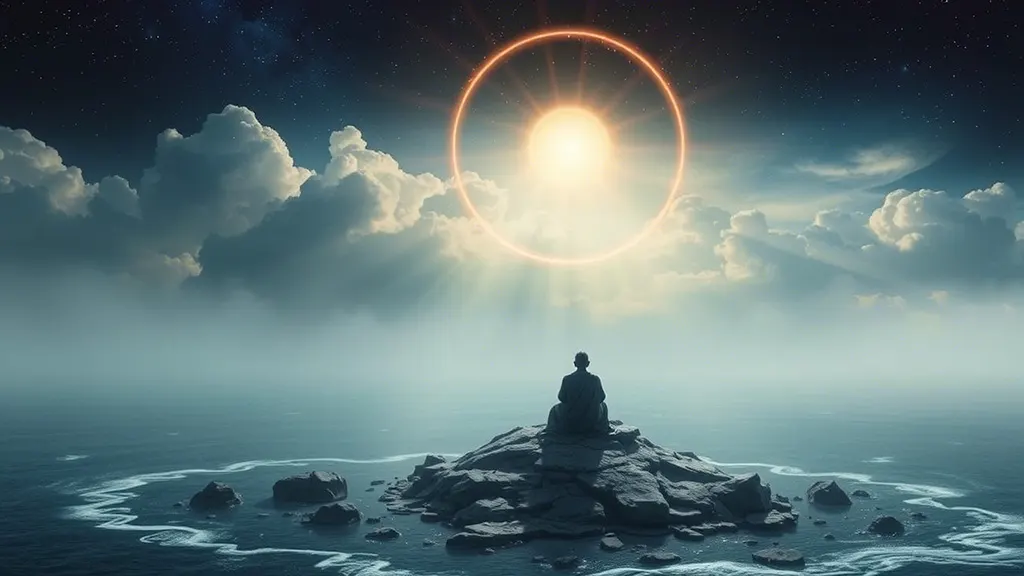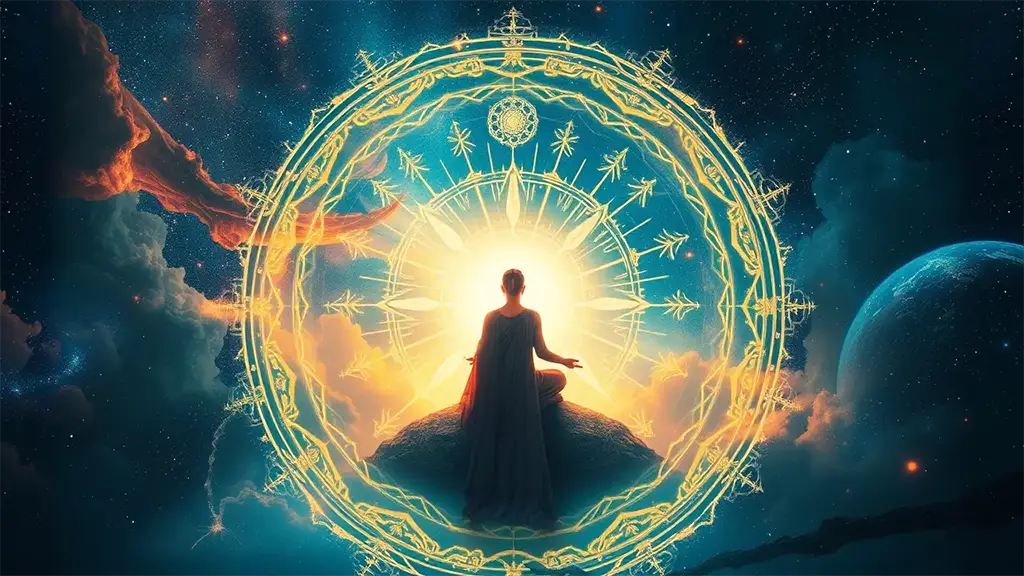Have you ever felt that events in life are more than just coincidences? Could it be that everything—from the rise and fall of individuals to the fate of the entire universe—follows a strict set of laws, whether we recognize them or not?

Since ancient times, Eastern philosophy has used the concepts of cause and effect and life and death to explain the workings of existence. However, if we look more broadly, we will see that these principles are not just part of philosophy or religion but also reflect the law of cause and effect in science and reality.
Two Pieces of the Cycle of Life
Cause and effect are not merely moral concepts or religious beliefs. They define how the world operates—on an individual level, within society, and even in nature. However, not all events in the universe have clear or easily identifiable causes.
In physics, quantum mechanics shows that some phenomena are random and unpredictable, such as Heisenberg’s uncertainty principle. In chaos theory, a small change can lead to a vastly different outcome, making precise predictions impossible (the butterfly effect). In real life, events such as natural disasters, genetic mutations, or even winning the lottery are primarily dictated by probability. This suggests that while causality is a significant principle, it is not the only law governing the universe—there is also randomness and chaos.
And what about life and death? It is an inevitable life cycle: birth, growth, aging, illness, and finally, death. Not only humans but all living beings, planets, and even galaxies follow this cycle.
Cause and effect and life and death are closely connected: What we do in one stage determines what happens in the next. A person who lives virtuously may not immediately see good results in this life, but they might experience fortune in the next. Similarly, in nature, everything is a consequence of previous factors.
The Nature of Natural Laws
Looking at the universe, we can see many similarities between the law of cause and effect and scientific principles.
Cause and Effect – Nothing Comes from Nothing
In physics, Newton’s Third Law states that “for every action, there is an equal and opposite reaction.” This illustrates the relationship between cause and effect in the physical world. However, in philosophical causality, this relationship is not always immediate or equal in magnitude—it can manifest in different forms and at different times.
The law of conservation of energy states that energy is neither created nor destroyed but simply transformed between different forms. Similarly, in Buddhist thought, karma does not disappear but continues to influence the future—not as a measurable physical energy, but as an ethical and spiritual force.
💡 This highlights a common ground between science and Buddhist causality: Almost everything has a cause, even if we do not immediately perceive it.
Life and Death – The Everlasting Cycle of Existence
Not only humans but also nature and the universe follow a cycle of birth, decay, and rebirth.
- Life and evolution: From animals to plants, everything is born, grows, ages, and dies, eventually becoming nourishment for the next generation.
- The life cycle of stars: A star forms from cosmic dust, shines brilliantly for millions of years, then gradually depletes its energy and explodes, leaving behind a black hole or nebula—potential birthplaces for new stars.

🔥 Thus, in Eastern philosophy, life and death are not an end but a transformation.
Evolution – Only the Adaptable Survive
Looking at the laws of evolution, we can also see traces of the law of cause and effect:
- Species that adapt well will survive and thrive, while weaker species that fail to adapt will gradually be eliminated.
- Past actions determine the fate of a species. For example, our ancestors once lived in trees, but as the environment changed, they began walking on two legs and developing intelligence—allowing humans to dominate the planet.
💡 In a broader sense, causality applies not only to individuals but also to entire species.
The Cosmic Cycle of Rebirth
Is the universe eternal, or does it also have a life cycle?
- Big Bang: The moment the universe was born from a singularity, similar to “birth” in the life-death-rebirth cycle.
- Expansion: The universe continues to expand and develop, much like the process of “aging.”
- Big Crunch: If the universe stops expanding and collapses back into a singularity, it resembles “death.”
- The universe and rebirth: Some cosmological models suggest that after the Big Crunch, a new Big Bang could occur, creating an entirely new universe.

Scientists debate how the universe will end. Some believe in the Big Crunch—where the universe contracts and is reborn in another Big Bang. Others lean toward the Big Freeze, where the universe expands endlessly into a cold, empty void. Another theory, the Big Rip, envisions a scenario where everything is torn apart into nothingness. We don’t yet know which will happen, but if the Big Crunch is real, then the universe may have already been reborn countless times without us realizing it.
Cause and Effect & Life and Death – More Than Just Philosophy
From the human body to the movement of galaxies, from small actions to cosmic events, everything follows a universal principle: Cause – Effect – Life – Death – Rebirth.
If most events in the universe have causes and consequences, then does our own existence also follow these laws?
So, what seeds will you choose to plant for your life? 🌱
